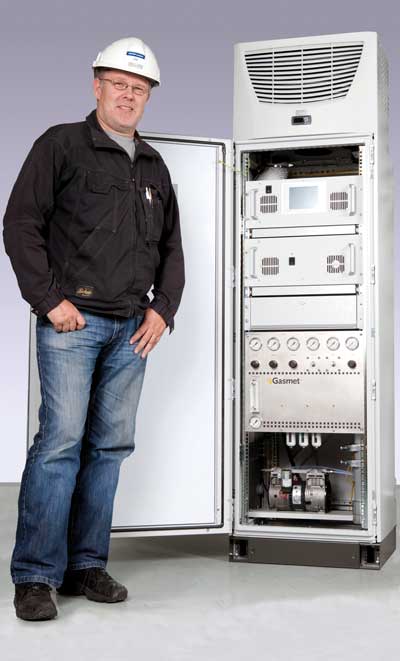
Stricter monitoring requirements being imposed on large combustion plants in Europe are affecting a wide range of industries. Dr Andrew Dixon of Gasmet Technologies UK (formerly Quantitech) explains how instrumentation companies are responding, particularly for measuring emissions of mercury.
The combustion of fuel and waste produces a wide variety of pollutants and greenhouse gases, so regulators around the world are imposing increasingly strict emissions limits and monitoring requirements to improve air quality and fight climate change. Generally, emission limit values are being lowered, the number of parameters being monitored is increasing, and the requirement for continuous monitoring is growing.
With the requirement to monitor more parameters, operators have to employ multiparameter technologies such as FTIR (Fourier-transform infrared spectroscopy), or buy a number of analysers. For this reason, Gasmet UK has developed an integrated systems capability, designing and building complete monitoring systems approved under the Environment Agency’s monitoring certification scheme MCERTS, to meet plants’ individual requirements.
However, one of the pollutants of major concern, mercury, necessitates a specific monitoring technology, and since the emissions limits are so low, it is necessary for this technology to have performance certification at these levels.
In Europe, member states may set specific limits and monitoring requirements within the framework established by the Industrial Emissions Directive. So individual states may set stricter limits, or individual plants may implement more rigorous monitoring and abatement technology in order to demonstrate good environmental performance as part of a corporate responsibility strategy, in response to demands from stakeholders, or in anticipation of tighter future regulatory requirements.
Mercury is considered by the World Health Organisation to be one of the top ten chemicals of major public health concern, so there are global initiatives to lower emissions, particularly from power plants, waste combustion plants and cement plants.
New environmental standards for large combustion plants strengthen the requirements of the IED for both reduction and monitoring. These stem from a review of the Best Available Techniques Reference Document for LCPs, the so-called LCP BREF. This includes new BAT-associated emission levels (BAT-AELs) and sets new monitoring requirements for sulphur dioxide, nitrogen oxides, mercury, and particulate matter.
The LCP BREF applies to combustion plants with a total rated thermal input exceeding 50MW. However, it also applies to smaller units where they are combined to build one larger installation exceeding 50MW.
The BAT-AELs for mercury emissions to air from coal and lignite burning power plants are extremely low. For example, a new coal-fired power plant with ≥ 300MWth has a BAT-AEL of <1-2μg/Nm³ mercury (annual average), and an existing lignite-fired power station with a thermal input under 300MW has a BAT-AEL of <1-10μg/Nm³ mercury (where Nm3 denotes a normal metre cubed, that is at 0°C and 1 atmosphere).
Monitoring equipment must be MCERTS certified to perform within the requirements of a permit, which is why the possibility of continuous monitoring should be considered, and both current and future requirements for certified monitoring ranges and levels of uncertainty should be addressed. For these reasons, the recent certification of Gasmet’s Continuous Mercury Monitor is of particular significance.
The Gasmet CMM has successfully completed EN15267-3 testing using cold vapour atomic fluorescence to provide the world’s lowest EN15267 certified range for measurements of mercury. The CMM is certified for operation over a number of different ranges up to 1000µg/m³, but considering the latest regulatory requirements, the CMM’s certified range of 0-5µg/m³ will be of particular relevance to the operators of combustion processes.
In conclusion, when defining a monitoring strategy it is vitally important to take future requirements into account (from both regulators and stakeholders) when choosing appropriately certified technology. In addition, the monitoring requirements should be assimilated into the plant design at an early stage.
Dr Andrew Dixon +44 (0)1908 227722
info@quantitech.co.uk | www.quantitech.co.uk

